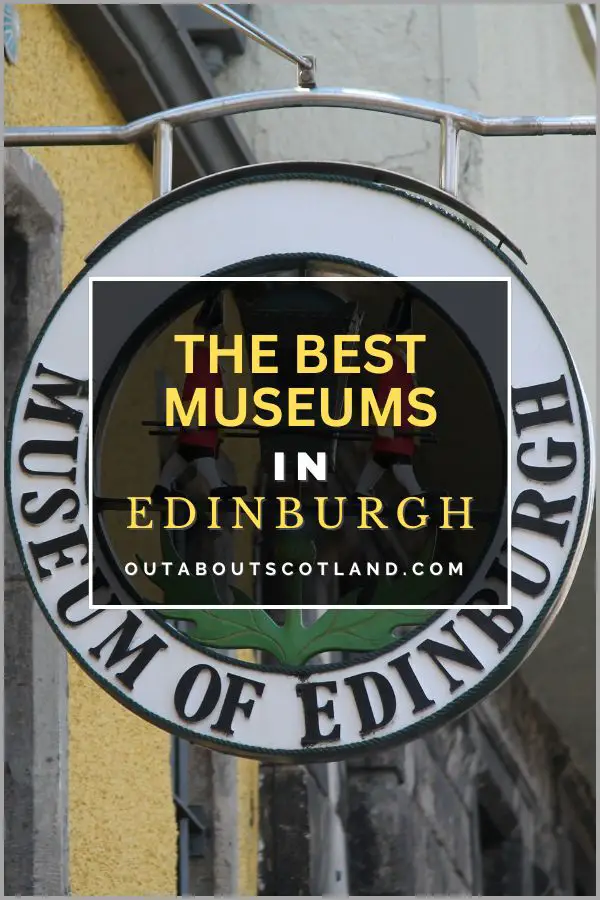Edinburgh is Scotland’s premier tourist destination, with over 4 million visitors coming to the city each year to explore its royal palace, majestic castle, and imposing cathedral. Many tourists are drawn to the city’s historic buildings, and attractions like Edinburgh Castle are frequently voted among the top 10 tourist attractions in the United Kingdom.
In this article, you’ll discover the best attractions that are situated within the boundary of Edinburgh’s Old Town, along with descriptions, addresses, and links to visitor guides.
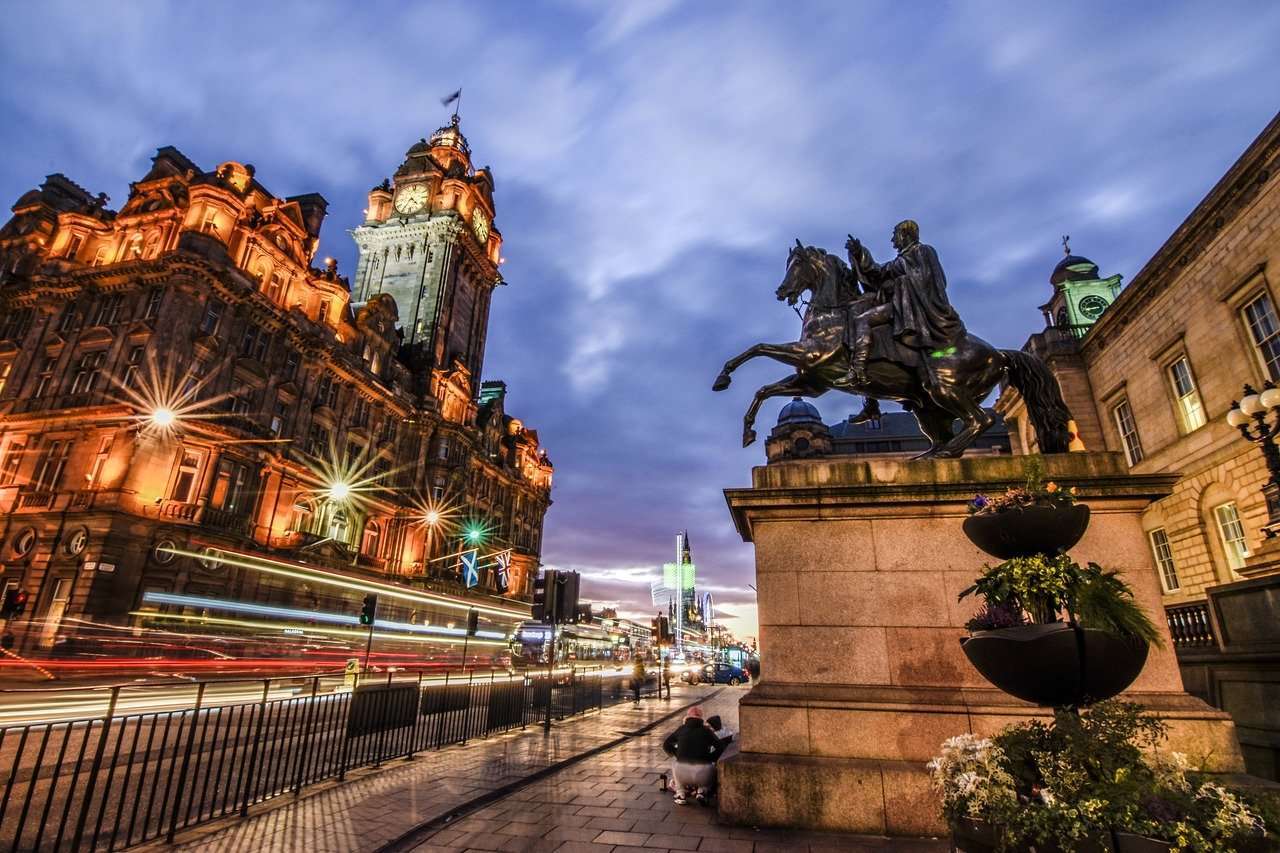
Historic Buildings in Edinburgh’s Old Town
There are a lot of reasons why hundreds of thousands of tourists flock to Edinburgh each year. For some, it’s the allure of the city’s exciting nightlife and its world-class bars and restaurants. Others briefly spin through the city as part of a whistle-stop tour of Scotland, and many more choose to visit over the course of a weekend for a romantic break.
Most of the city’s attractions centre around history, which isn’t really surprising when you consider that Edinburgh – or more specifically, the Old Town – is much the same as it was in the time of Mary Queen of Scots.
The grand buildings that existed then are still there in modern-day Edinburgh, and a walk up the Royal Mile will take you from Holyrood Palace to Edinburgh Castle by way of John Knox House, St. Giles Cathedral, and Canongate Kirk – all of which are open to the public.
There are many more fascinating buildings to discover (there are more than 4,500 listed buildings in the city), but in this article, I’ll cover a few of the highlights that are easily walked from the Royal Mile.
Protect Your Family From Scotland's Biting Midges
- Powerful, reliable protection for up to 8 hours
- Water- and sweat resistant
- Repels midges, mosquitoes, horse flies, sand flies, fleas and ticks
- Safe for use on adults, children over 30 months and pregnant women
- Non-sticky, moisturising with a pleasant fragrance
- Packaging may vary
Edinburgh Castle
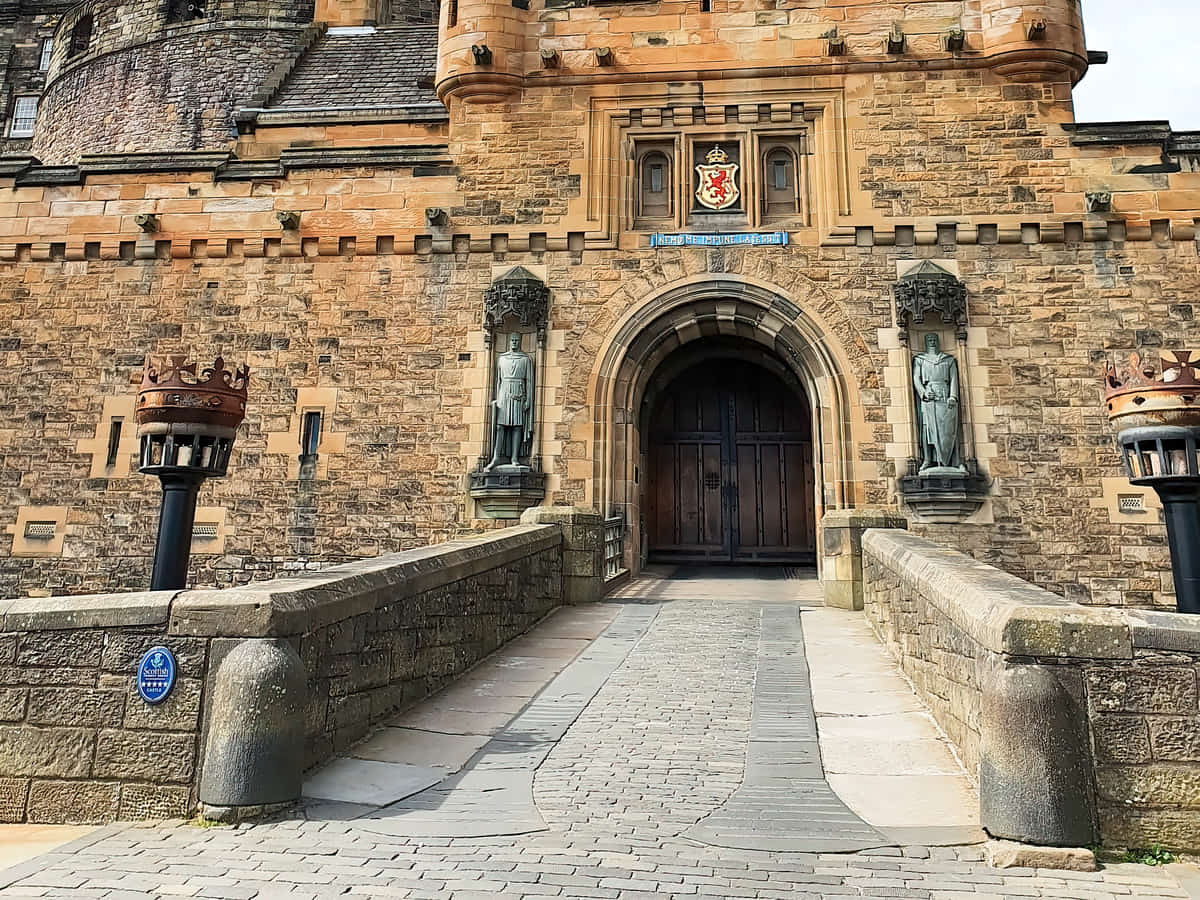
Address: Castlehill, Edinburgh, EH1 2NG
Visitor guide: Edinburgh Castle
Edinburgh Castle doesn’t really need an introduction as it’s one of the most famous buildings in Edinburgh, if not Britain. The castle attracts more than 2 million visitors annually who clamour to see highlights like the Honours of Scotland (Scotland’s equivalent of the Crown Jewels) and the National War Museum, but it also draws vast crowds in August when it sets the stage for the globally-televised Royal Edinburgh Military Tattoo.
The origins of the castle began over one thousand years ago when the Gododdin (a powerful Scottish tribe) established a hill fort on top of Castle Rock. When Scotland’s tribes were later brought under the rule of one kingdom, the strategic importance of Castle Rock meant that it was useful as a royal fortress, which is why the Scots King David I began construction of the castle in the 12th century.
The castle was used as a military garrison for hundreds of years and it was partially converted into a military prison in the 1800s, but after a mass breakout proved it was not fit for use as a prison it was transformed into a national monument, a military museum and the Scottish National War Memorial.
Admission prices may be steep (expect to pay around £20 per adult) but it’s money well spent as this attraction is big enough to spend most of the day in if you take it slow, especially if you stay there for snack breaks in the castle’s highly-recommended cafés and restaurant.
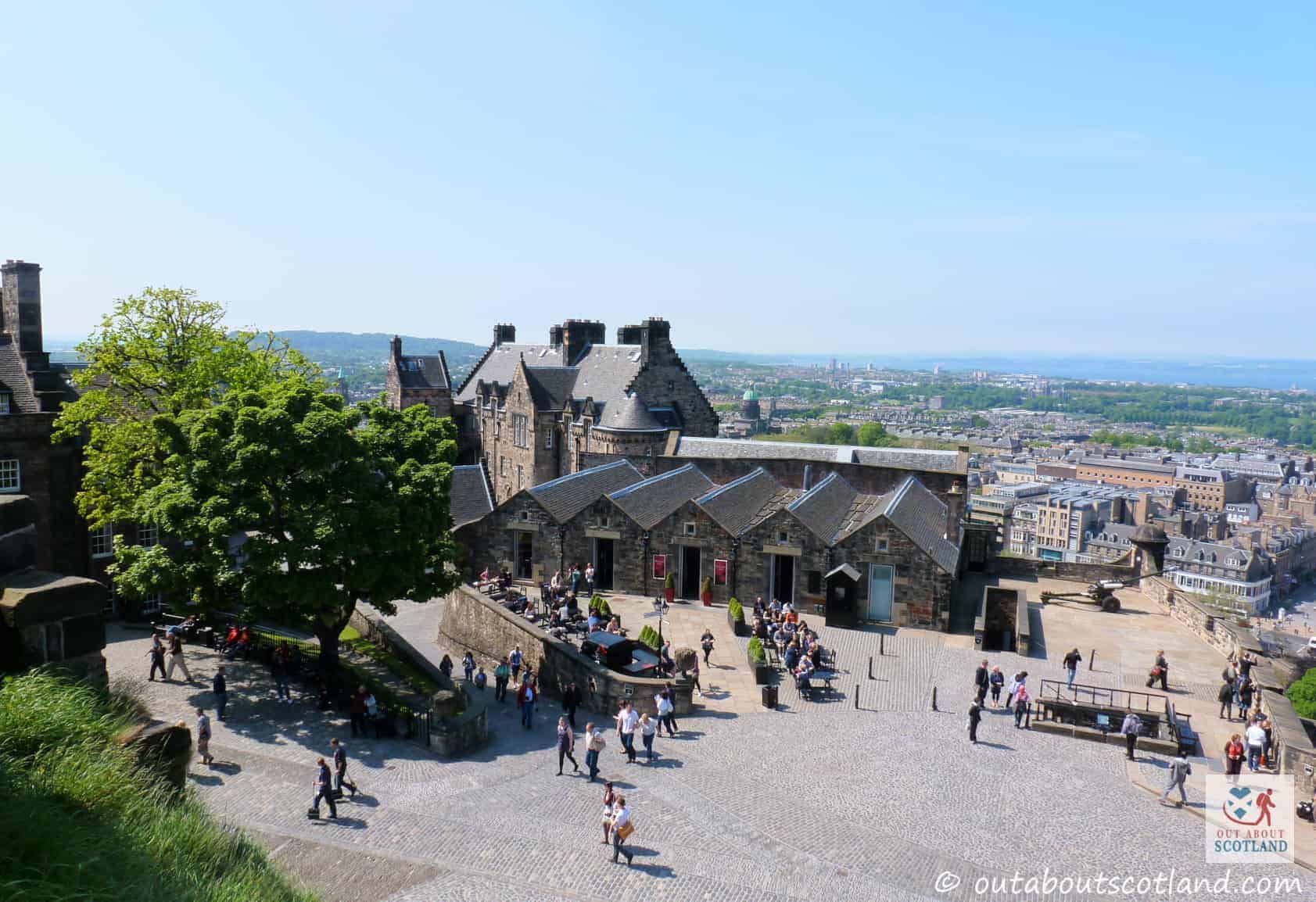
If you’re short on time there are a few essential things to see at Edinburgh Castle so I advise you to get a free map from the entrance kiosk and make your way to the Argyll Battery, the War Museum, the National War Memorial, the Royal Palace (which houses the Honours of Scotland), and the Great Hall.
You’ll have no problem finding the castle as it dominates the skyline in the city centre, and all you really need to do is head towards The Royal Mile (there are signs pointing to it in the city centre) and walk to the top of the street.
The Royal Mile, if you weren’t aware, is a one-mile cobbled and paved road that connects Holyrood Palace at one end to the castle at the other, and it’s the location for most of Edinburgh’s historic attractions.
Once you’re at the castle esplanade, you can head to through the gate entrance to get your ticket,but be warned, the queues get ferociously long, especially in summer, so my advice is to book a tour in advance as you’ll be able to walk straight in.
Holyrood Palace
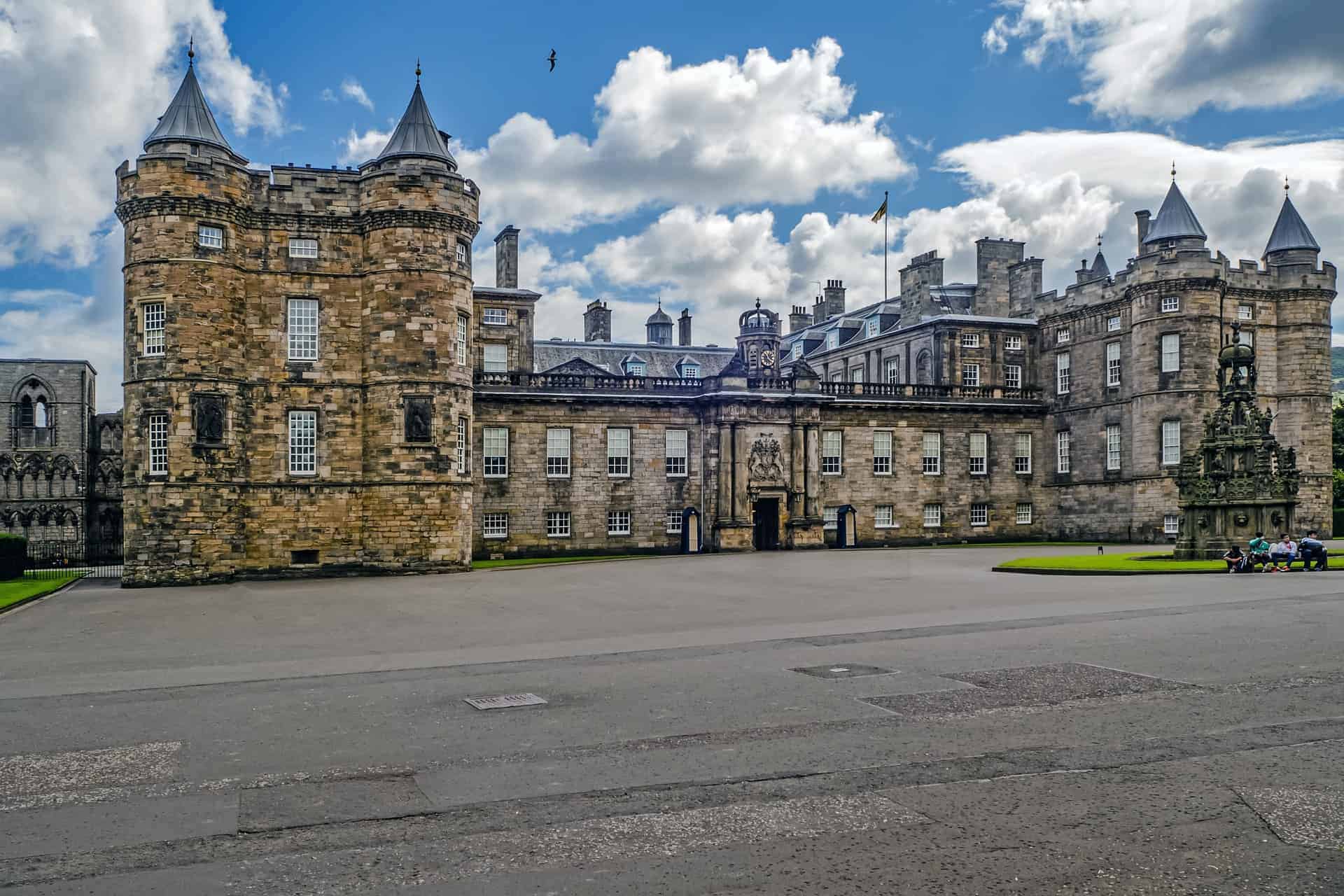
Address: Canongate, Edinburgh, EH8 8DX
Visitor guide: Holyrood Palace
At the opposite end of Edinburgh Castle lies Holyrood Palace, the official residence of HM the King when he’s in Scotland. The palace has a history dating back to the early 1100s, when Holyrood Abbey was founded, but the building we recognise today was built by James IV in the 16th century.
Just like the castle, you can’t really miss this attraction as all you have to do is head to the Royal Mile and walk to the bottom of it, where you’ll find the palace opposite the Scottish Parliament building and Holyrood Park.
Admission is a bit steep at around £20, although that does include entry to The Queen’s Gallery, which is the royal collection of paintings. But unlike the castle, you’ll struggle to spend more than 2-3 hours at the palace. Still, it’s an interesting place, and it has a few points of interest that make it worth visiting.
Tours through Holyrood Palace are self-guided, but they do include a multimedia tour where you can learn about the palace’s history as you walk through it. Not all of the rooms are open to the public, but the majority are, as are the ruins of Holyrood Abbey and the royal gardens (although the gardens are usually closed in winter).
Points of interest are the Great Gallery, the Throne Room, and the Mary Queen of Scots’ chambers. The Great Gallery is the largest room in the palace, and it’s the location of portraits of many of Scotland’s legendary kings. The throne room is still used for royal receptions and state occasions, and Queen Mary’s chambers are the rooms where the doomed monarch lived from 1561 to 1567.
After you’ve finished the tour, you’ll end up at Holyrood Abbey, which is roofless and almost completely in ruin, but no less interesting for it. You can then wander around the 10-acre palace gardens either on your own or as part of a guided tour.
Your visit will be nicely rounded off in the souvenir shop (which is one of the best of all the tourist attractions in Edinburgh) and the on-site café, which serves a delicious selection of baked treats and hot drinks.
Book Tours in Scotland
St. Giles Cathedral

Address: High St, Edinburgh, EH1 1RE
Visitor guide: St. Giles Cathedral
St. Giles Cathedral has been one of the dominant features of Edinburgh for more than 900 years. The Gothic spire is one of the most visible features of the Edinburgh skyline and the huge stained-glass windows are some of the finest in Scotland, so if you’re visiting the city, you almost have to include a visit to the cathedral in your itinerary, especially considering it’s free to get in.
St. Giles Cathedral has strong ties to the Protestant reformer John Knox, who was fiercely critical of Mary Queen of Scots, and there are several statues of him inside. If you’d like to see something that nearly all visitors to the city miss, pop around the back of the cathedral and look for a brass plaque amongst the cobblestones in the car park which is the location of Knox’s grave.
Another interesting feature outside the cathedral is the Heart of Midlothian, a cobblestone mural on the pavement facing the High Street. The heart-shaped stones memorialise an old tollbooth where Edinburgh’s poorest used to be imprisoned when they couldn’t repay their debts. Even today, locals show their contempt for the long-gone tollbooth by spitting on the mural, so watch where you step…
When you enter the cathedral, you’ll notice there are lots of tapestries covering the walls and many statues perched against the edges of the nave. Unfortunately, there aren’t any information panels, so you won’t know the history behind them unless you purchase a guidebook from the on-site shop.
As a top tip, try to time your visit when sunlight floods through the stained-glass windows in the nave because the coloured glass lights up the interior in a kaleidoscope of colours.
The Museum on the Mound

Address: The Mound, Edinburgh, EH1 1YZ
Visitor guide: Museum on The Mound
While a visit to a bank’s headquarters might not sound like much fun, this one is well worth a visit as it includes a hidden gem of an attraction a few minutes’ walk from St. Giles Cathedral.
The Museum on the Mound is one of the few museums in the world that’s solely dedicated to the history of money, and thanks have to go to the Bank of Scotland, which curates the museum, for allowing free admission to the public.
The building sits high on a hill overlooking Princes Street and North Bridge, so even if you don’t go inside it’s worth visiting just to stand on the terrace to soak up the view.
There are lots of artefacts from Scotland’s history displayed in the museum that involve money in one form or another, from the earliest coins dug up from Roman archaeological sites near Edinburgh to a display case containing a million pounds of modern banknotes.
Elsewhere, there are cases full of old coins and banknotes, and exhibitions that explain how and why Scotland’s banks were founded. There are even displays that detail how criminals have tried to rob Scotland’s banks over the years. There are also paintings and silverware from the Bank of Scotland’s earliest days, and there are regular children’s activities where museum staff help younger members of the family to strike their own coins.
The building itself is very grand so you might be surprised to know it was actually built on top of a rubbish dump that was created from excavations from the Nor Loch when it was drained to create Princes Street Gardens.
Protect Your Family From Scotland's Biting Midges
- Powerful, reliable protection for up to 8 hours
- Water- and sweat resistant
- Repels midges, mosquitoes, horse flies, sand flies, fleas and ticks
- Safe for use on adults, children over 30 months and pregnant women
- Non-sticky, moisturising with a pleasant fragrance
- Packaging may vary
Greyfriars Kirk
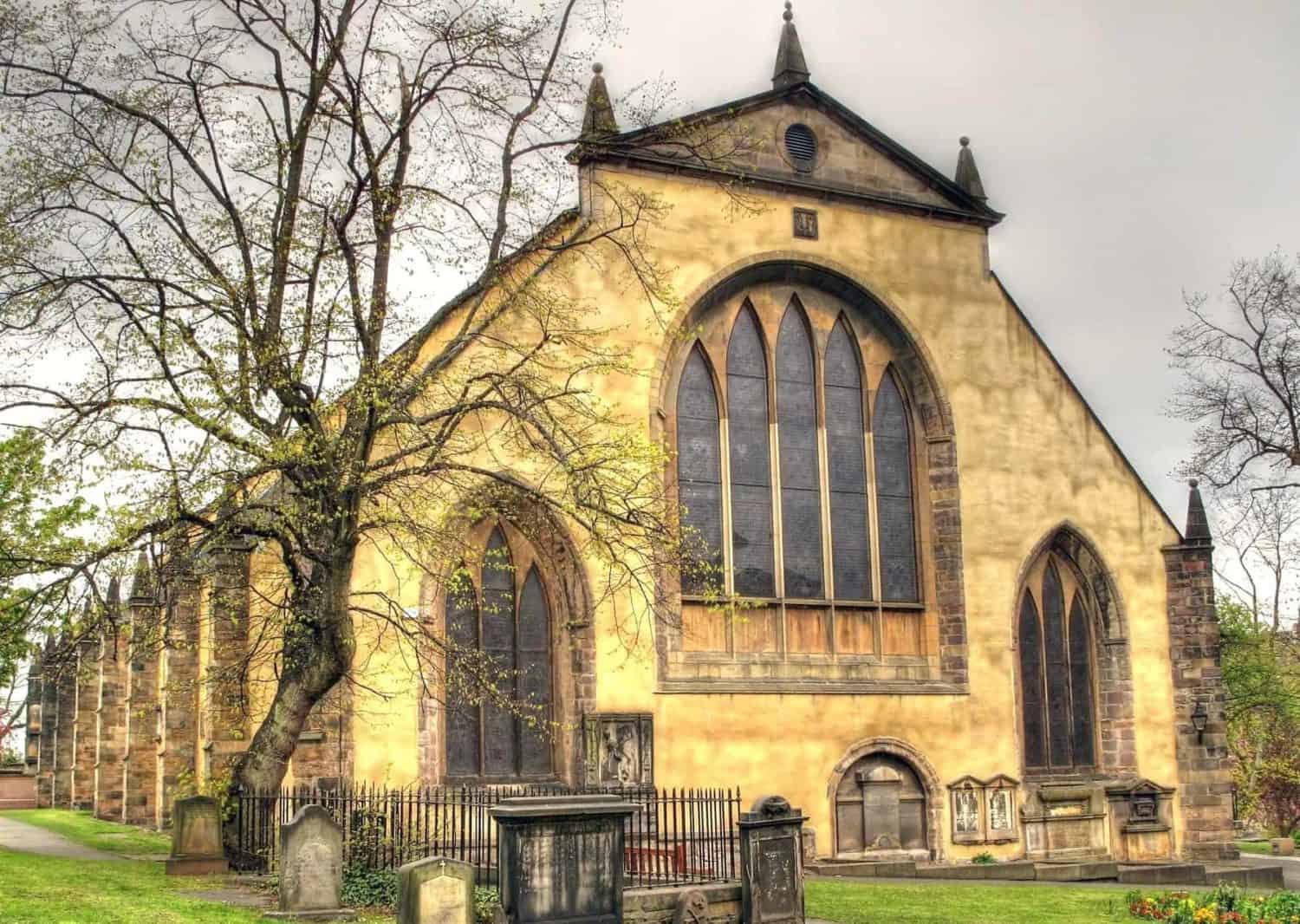
Address: 1 Greyfriars, Edinburgh, EH1 2QQ
Visitor guide: Greyfriars Kirk
Greyfriars Kirk is another historic attraction in Edinburgh that’s located within walking distance of the Royal Mile. To find it, head south on George IV Bridge and look for the National Museum of Scotland, which is more or less opposite Greyfriars Kirk.
You can’t fail to miss it, as there will no doubt be groups of tourists lining up to get their photo taken next to a water fountain, which is the memorial to everyone’s favourite Scotts Terrier, Greyfriars Bobby. I’ve created an article about the legend of Bobby which you might like to look at before visiting the kirk, but if not, you’ll find his grave and a memorial plaque about him as you enter the main gate.
In front you’ll see the ochre-coloured kirk which is much like any other in Edinburgh, although it certainly has more history associated with it than most others in the city. The kirk was founded in 1602, and it has been an integral part of Edinburgh’s Old Town since then, mostly due to its graveyard.
Some of the oldest walls in the city can be found at Greyfriars, and if you take a look at the burial area behind the kirk, you’ll see sections of the Flodden Wall which at one time enclosed the entire city.
The graveyard is infamous for its use as a prison for Covenanters (a religious sect in the 1600s) who were imprisoned there in their hundreds with barely any food and no warm clothing during Edinburgh’s harsh winters. Many covenanters died in Greyfriars, which is why there are so many reports of ghosts walking among the gravestones, some of whom have been reported to inflict physical pain on visiting tourists.
If you’re a Harry Potter fan, you’ll find several of the gravestones were the inspiration for J.K. Rowling when she wrote The Philosopher’s Stone, so keep your eyes peeled for names like Potter, McGonagall, and Riddell as you explore the site. Meanwhile, the interior of the church is quite basic and not particularly exciting, but there’s a small museum that is fairly interesting and the Kirk runs guided tours if you’d like to learn more about it.
John Knox House
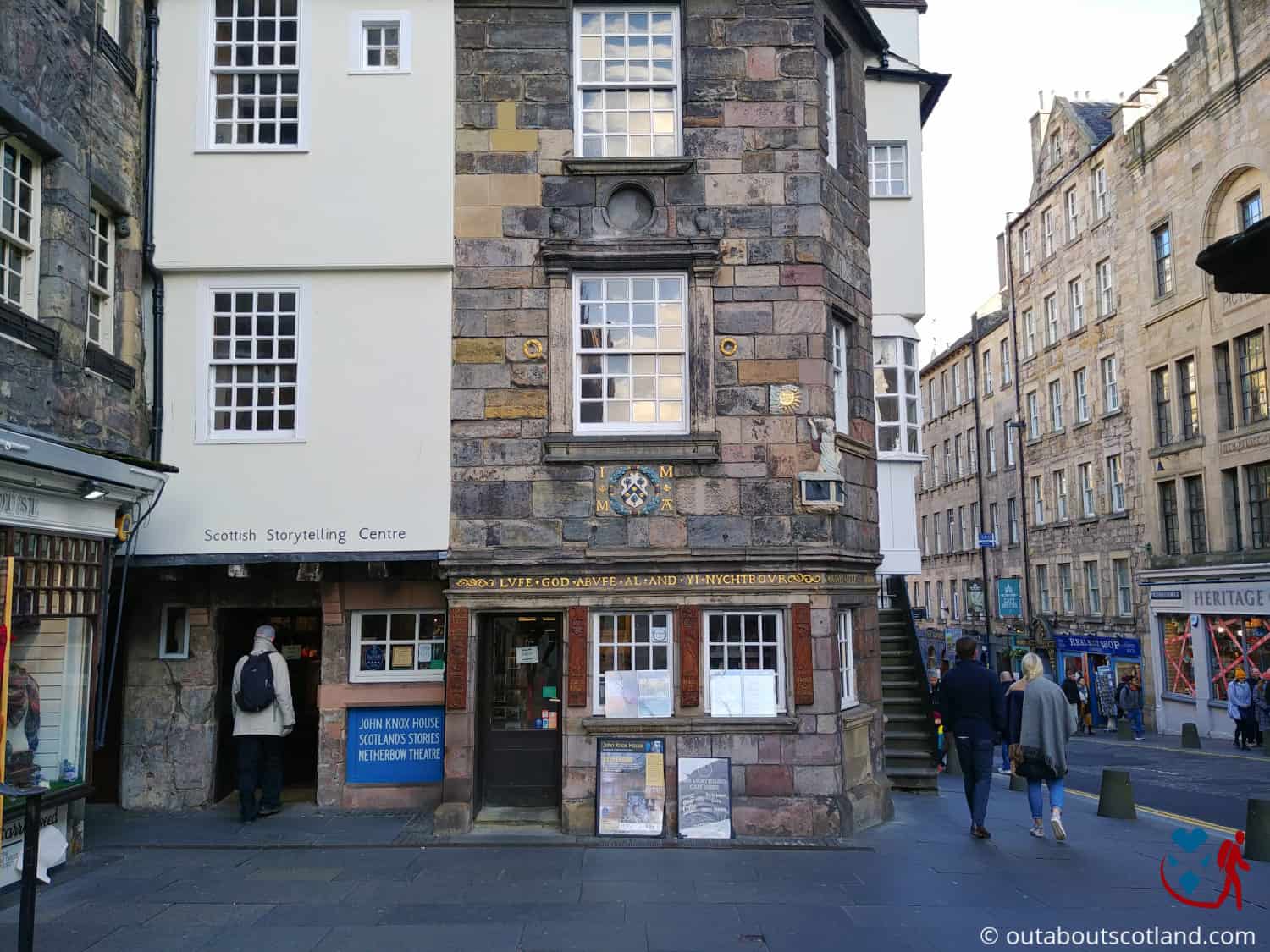
Address: 43-45 High Street, Edinburgh, EH1 1SR
Visitor guide: John Knox House
The 16th-century John Knox House is a historic building in the middle of the Royal Mile. Although Knox only lived in the house for a short time, it’s his association with the building that prevented it from being demolished in 1840, when many other derelict buildings were being torn down.
The house was built around 1470, which makes both it and the adjoining Moubray House the only surviving mediaeval buildings on the Royal Mile. Today, the house is well known for its museum, which features time capsules from the 1840s that describe how the house was saved from destruction, along with information panels that explain the story of the Scottish Reformation and the part John Knox played in it.
During your visit, you’ll see decorations that were popular amongst the wealthy residents of Edinburgh in the 15th century, including a beautiful wooden gallery and ornate hand-painted ceilings. These decorations were probably installed by the 16th-century goldsmith James Mossman, who lived there but was executed for creating counterfeit coins in 1573.
After his death, the house was handed over to James VI, but it gradually fell into ruin over the following 300 years before being restored in the late 1800s. These days, John Knox House is one of the city’s most popular historic attractions, and it’s a worthy addition to any Edinburgh sightseeing tour.
Book Tours in Scotland
Gladstone’s Land
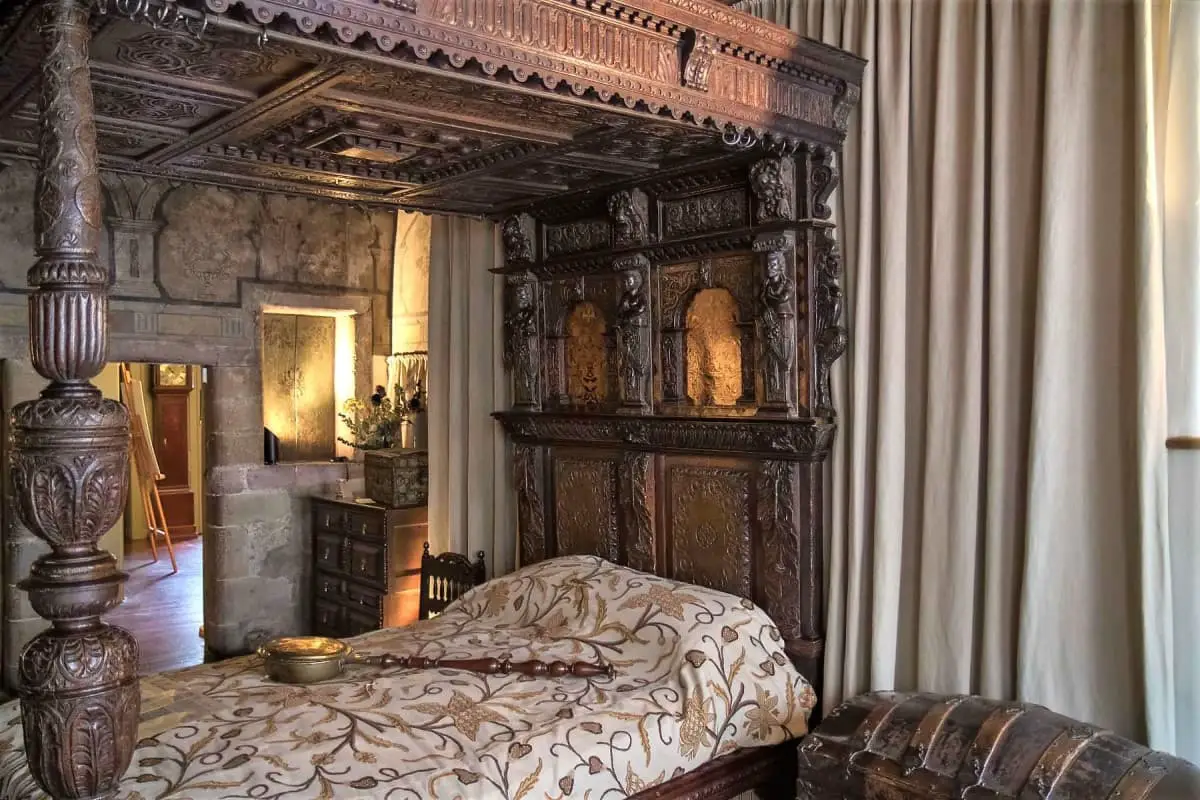
Address: 477B Lawnmarket, Royal Mile, Edinburgh, EH1 2NT
Website: Gladstone’s Land
If you want to experience how the residents of Edinburgh lived in the 17th century, then a visit to Gladstone’s Land on the Royal Mile is a great way to get transported back in time. The National Trust owns and operates the ‘Land’, an old townhouse close to the castle that has been renovated back to it’s former glory.
While the Georgian House in Edinburgh’s New Town provides a glimpse into the life of the wealthy in the 1700s, Gladstone’s Land transports you back in time even further to when both the rich and poor shared apartments in the ramshackle tenement buildings of the Old Town.
The building rises six stories above what would have been the foul-smelling streets of 17th-century Edinburgh, and in the cramped conditions of those times there would have been entire families crowded into each room.
By the time the 20th century came along, Gladstone’s Land had been condemned along with many other buildings, and was listed for demolition. However, the National Trust recognised its historic importance and eventually took ownership.
Mary King’s Close
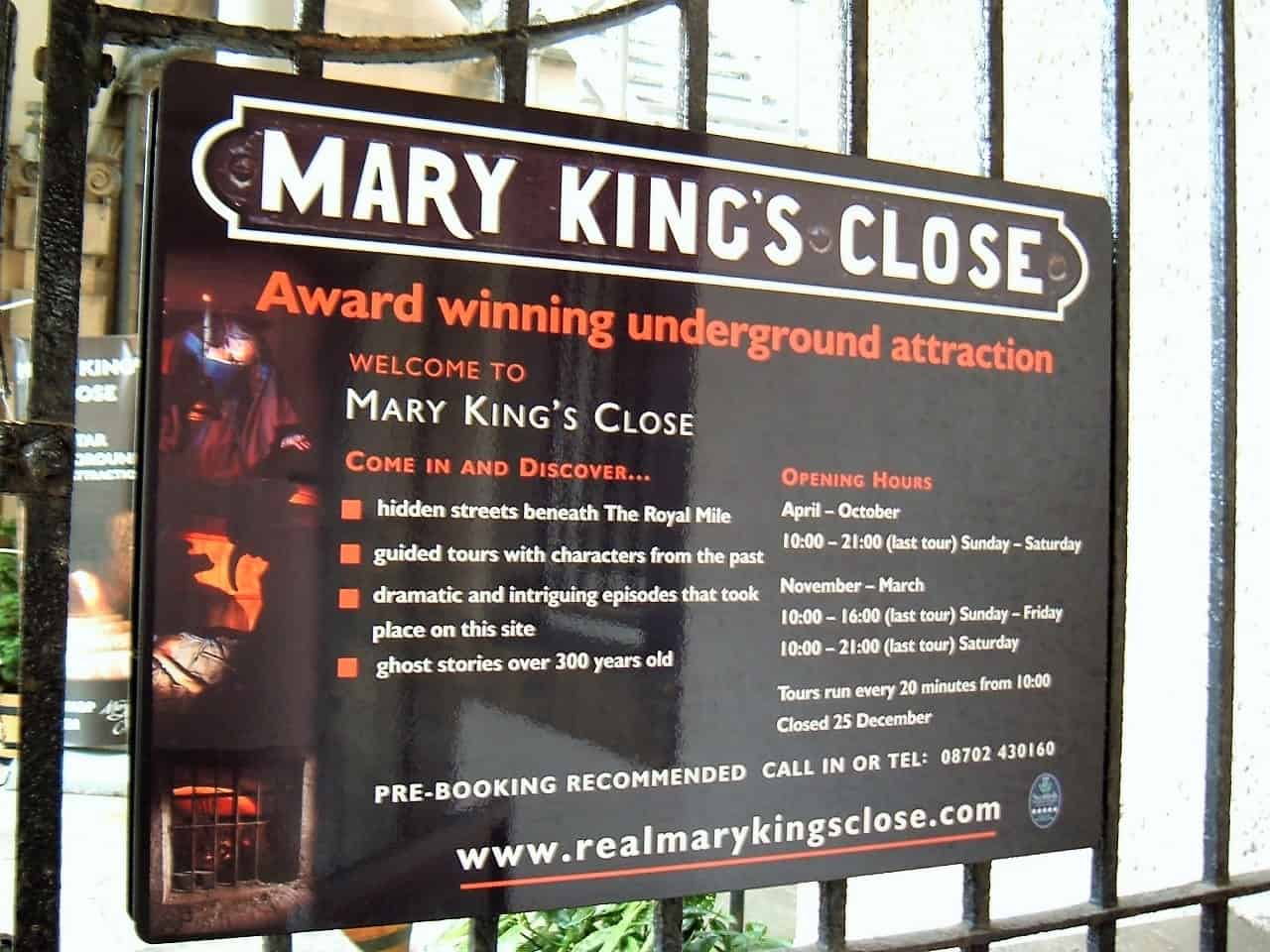
Address: High Street, 2 Warriston’s Close, Edinburgh EH1 1PG
Visitor guide: Real Mary King’s Close
Mary King was born in Edinburgh in the late 1600s, beginning her life as a merchant by sewing clothes for sale at her shop on the Royal Mile. In 1616, she married fellow merchant and businessman Thomas Nimmo, who was a representative of the borough of Edinburgh, otherwise known as a burgess.
Following her husband’s death in 1629 Mary and her four children moved into an area of tenement buildings that had the name Alexander Kings Close. As Mary’s merchant business expanded, she eventually rose to prominence as a burgess herself, so when she died, Alexander King’s Close was renamed Mary King’s Close in her honour.
As the years passed, the building fell into ruin until it was eventually used as the foundation for new tenement buildings. Mary King’s Close appeared to be lost forever until it was uncovered and restored in the 1900s. Today, Mary Kings Close is a popular tourist attraction that welcomes hundreds of visitors each day.
When you enter the attraction, you’re taken on a guided tour beneath the streets of the Old Town, where you can experience what it would have been like to live during the plague-infested and disease-ridden times of Mary King.
There are video screens that retell the stories of the long-deceased inhabitants of the close, and the tour guides will take you through the deepest parts of the underground maze of rooms while answering any questions you might have.
Protect Your Family From Scotland's Biting Midges
- Powerful, reliable protection for up to 8 hours
- Water- and sweat resistant
- Repels midges, mosquitoes, horse flies, sand flies, fleas and ticks
- Safe for use on adults, children over 30 months and pregnant women
- Non-sticky, moisturising with a pleasant fragrance
- Packaging may vary
Camera Obscura
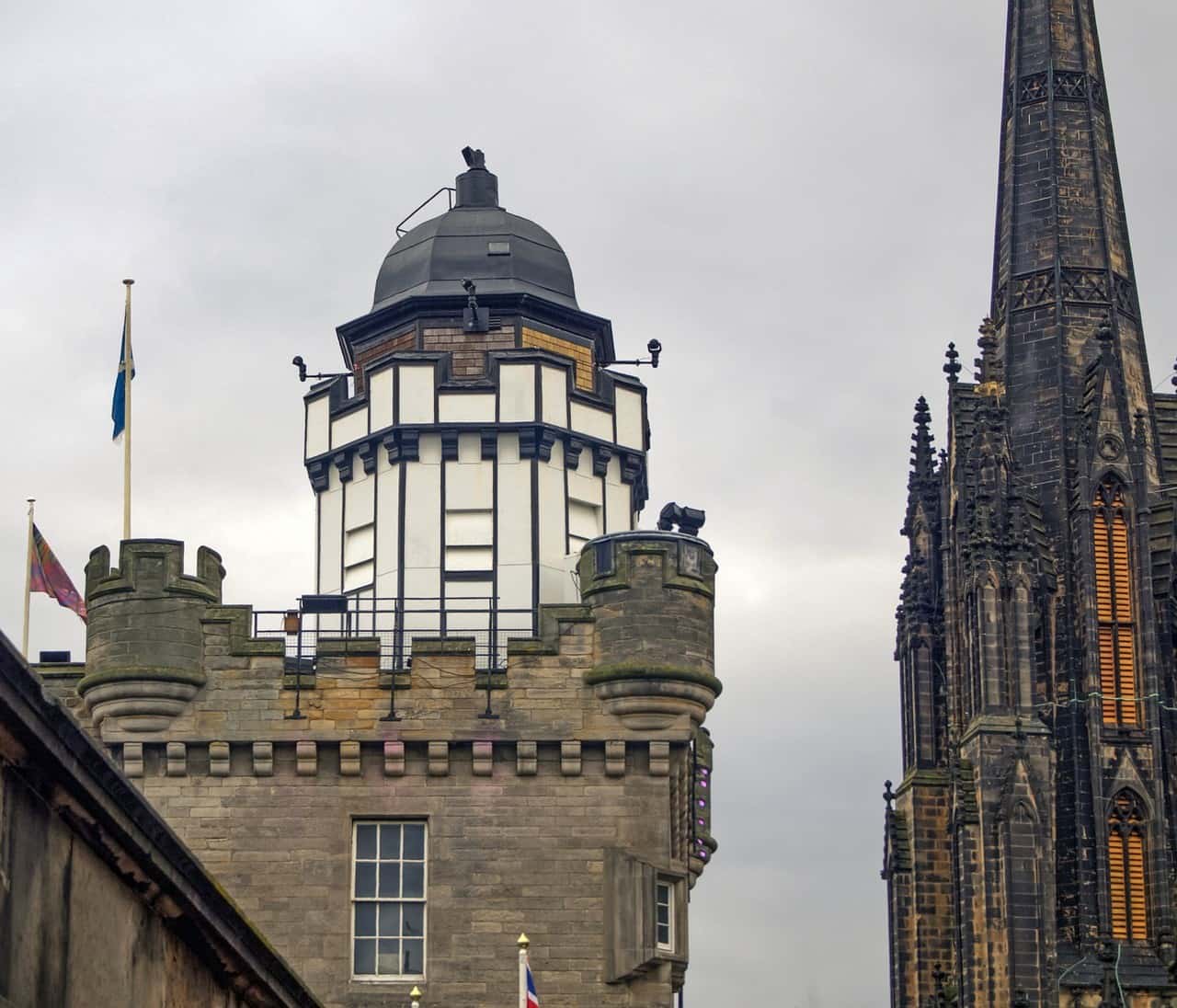
Address: Castlehill, Royal Mile, Edinburgh EH1 2ND
Website: Camera Obscura Edinburgh
The Camera Obscura is one of the oldest purpose-built attractions in the United Kingdom and tens of thousands of visitors pour through its doors each year.
Camera Obscura and World of Illusions is located in a prime location on The Royal Mile, not far from Edinburgh Castle and more-or-less opposite The Scotch Whisky Experience. Visitors can experience six floors of interactive exhibitions that are designed to confound, confuse, and amuse in equal measure, with exhibits showcasing optical illusions using light and colour.
There’s a section dedicated to holograms, another featuring a mirror maze, and yet another with a swirling vortex tunnel. Each area is designed to push your senses to the limit with lots of high-tech trickery powering the shows.
The attraction began life in the early 18th century when an Edinburgh telescope maker named Thomas Short built a display for his work on Calton Hill, with his telescopes eventually passing to his daughter Maria in 1827. After her death, the telescope display was renovated and moved to its present location on The Royal Mile, and the premier exhibit, the camera obscura, was placed at the top of the building, where it has remained for the last one hundred years.
Edinburgh’s Past
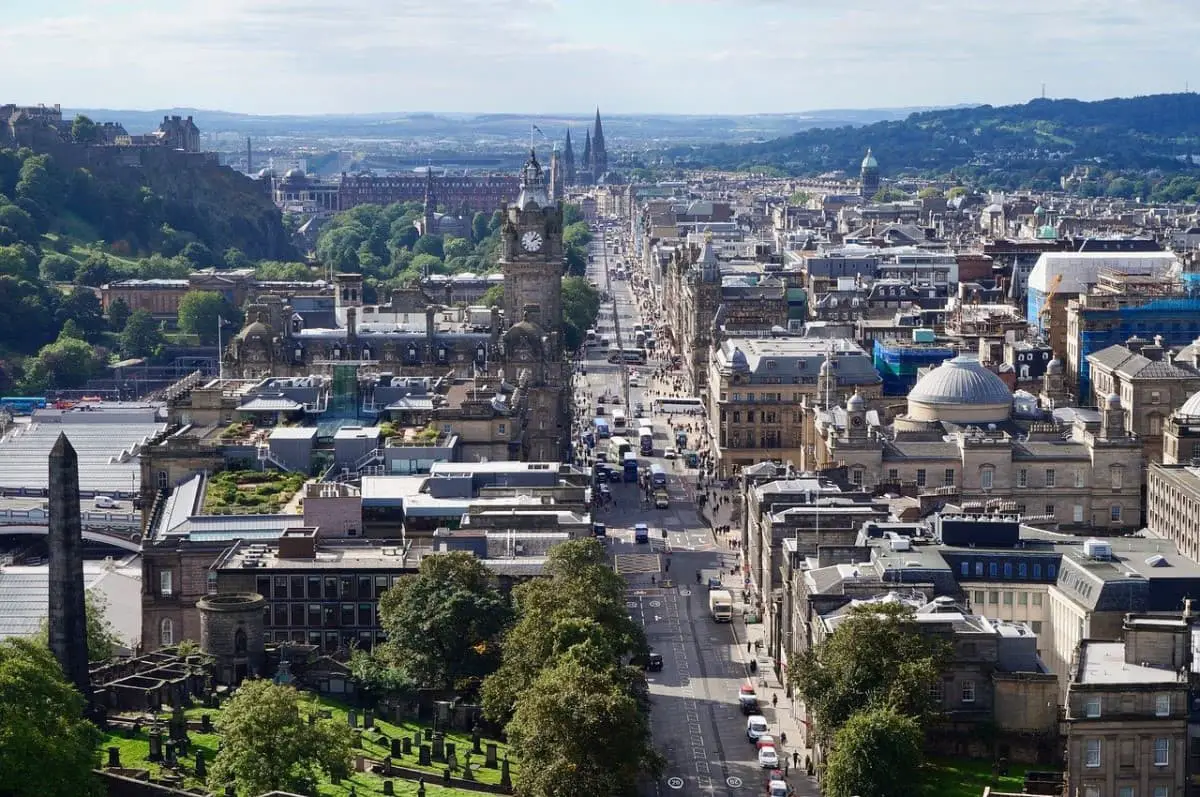
While most cities claim to have a fascinating history, ‘Auld Reekie’ has a more interesting story than most. This part of Scotland has been inhabited for thousands of years, although the earliest records indicate that the city’s origins began in the Middle Ages, when a hill fort was established on Castle Rock, where Edinburgh Castle now sits.
From the seventh to tenth centuries, the town (also known as a ‘burgh’) was a part of the Anglian Kingdom of Northumbria, after which it evolved into the official residence of Scottish kings thanks to Castle Rock being such a good defensive fortress.
The town continued to grow in size until it was officially decreed as the capital of Scotland in the 14th century.
During the following years, it became well-known as a site of trade thanks to its proximity to the North Sea, as well as a centre of enlightenment after several world-class universities were established.
By the 18th century, what is now known as the New Town – another UNESCO World Heritage Site – was added to the ‘Old Town’, and Edinburgh continued to enjoy its status as Scotland’s most important city.
Book Tours in Scotland
Edinburgh’s Future
Recent developments have seen several financial centres move into the city, and Edinburgh is now regarded as the second major British financial centre behind the City of London.
Other than finance, Edinburgh has seen a surge in scientific advances, and new industries in cutting-edge technologies are constantly springing up, thanks in part to the research conducted by Edinburgh’s university graduates.
Although Edinburgh has a long history, the future looks extremely bright, and it’s fast becoming one of the world’s top tourist destinations. If you want to discover Edinburgh for yourself, there’s no better way than to book yourself onto an organised tour. Take a look at the Edinburgh tours offered by Get Your Guide to see what’s available.
Frequently Asked Questions
What is the oldest building in Edinburgh?
The oldest building in Edinburgh is St. Margaret’s Chapel, which is located in Edinburgh Castle near the Mons Meg cannon. David I, St. Margaret’s son, constructed the chapel in the 12th century.
Why is Edinburgh called Auld Reekie?
Before the Nor Loch was drained to create Princes Street Gardens, Edinburgh’s residents threw their waste into the loch which over time became stagnant.
Coupled with the tenement blocks where people emptied human waste into the streets below, the city became known for its bad smell – hence the name ‘Auld Reekie’.
Is Edinburgh built on an old city?
Edinburgh expanded outward from Edinburgh Castle, but the protective Flodden Wall eventually constrained it.
Unable to build further outwards, the city built high-rise tenement blocks instead, and due to the lack of building space, many tenements near the city centre were built on top of existing streets.
These can still be seen at Mary King’s Close and the Vaults near the Royal Mile.
What is the difference between Edinburgh’s Old Town and New Town?
The Old Town of Edinburgh is the earliest part of the city that extends away from Edinburgh Castle, along The Royal Mile and down to Holyrood Palace.
As the Old Town began to fall into ruin the city council built a new district between 1767 and 1850, which attracted rich and educated residents away from the Old Town.
Today, both the Old Town and the New Town are designated as UNESCO World Heritage Sites.
Protect Your Family From Scotland's Biting Midges
- Powerful, reliable protection for up to 8 hours
- Water- and sweat resistant
- Repels midges, mosquitoes, horse flies, sand flies, fleas and ticks
- Safe for use on adults, children over 30 months and pregnant women
- Non-sticky, moisturising with a pleasant fragrance
- Packaging may vary







